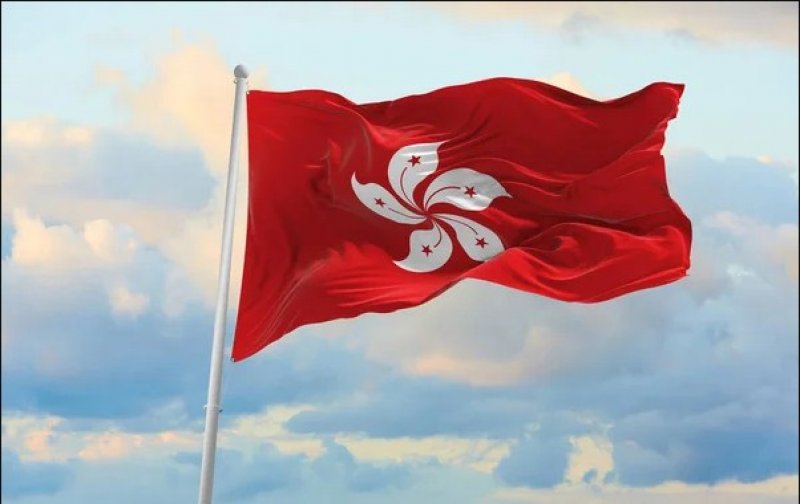Top 10 Mind-Blowing Facts About Hong Kong You Never Knew

Hong Kong, a vibrant and dynamic special administrative region of the People's Republic of China, is known for its stunning skyline and unique blend of Eastern and Western cultures. The city is situated on the southern coast of China, near the mouth of the Pearl River Delta. Today we will talk about 10 intriguing facts that make Hong Kong a go-to destination. Without further ado, let's get started.
Fact 1 - Hong Kong began as a fishing village.
Before becoming a major international financial center, the region was inhabited by indigenous communities engaged in fishing and farming. The earliest settlements were largely comprised of Tonka people, who were skilled fishermen and lived in stilt houses along the coast.
Over the centuries, as trade routes developed and Hong Kong's strategic location became more apparent, the area began to attract attention from Chinese and foreign traders. The British, after acquiring Hong Kong Island in 1842 following the First Opium War, further contributed to the urbanization and development of the region. As Hong Kong became a British colony and a significant trading port, it transformed from a collection of fishing villages into a thriving international hub.
While modern Hong Kong is known for its skyscrapers, financial institutions and vibrant urban life, traces of its fishing village origins can still be found in certain areas, particularly in the outlying islands and more rural parts of the new territories.
The contrast between the urban and rural landscapes reflects the city's perse history and development over the years. Indeed, from humble beginnings come great things.
Fact 2 - Origins of the Star Ferry
The history of the Hong Kong Star Ferry dates back to 1888, when the service was established by Dorabji Noroji Mithaiwala, an Indian Parsi. Originally known as the Kowloon Ferry Company, it began with just one steamboat providing transportation between Hong Kong Island and Kowloon.
In 1898, the company was renamed the Star Ferry Company, symbolizing its commitment to reliability and quality service. Over the decades, the Star Ferry became a vital link between Hong Kong's main regions, catering to the city's growing population and burgeoning trade.
The iconic green and white double-decker ferries that we recognize today were introduced in the 1960s. Despite the city's modernization and the development of alternative transportation options, the Star Ferry has retained its charm and popularity.
The service has not only been an integral part of Hong Kong's daily life, but has also become a symbol of the city itself. Throughout its history, the Star Ferry has weathered challenges, including fires, accidents, and financial difficulties, but today, it is among the busiest ferries in the world. With a fleet of 12, the company operates two routes across the harbor carrying over 70,000 passengers per day or 26 million per year.
Fact 3 - The Hong Kong Islands.
Hong Kong Island tends to steal the show, but the city has 263 islands. Each with its own unique charm and characteristics. Lantau, Cheung Chau, and Lamma are among the more well-known islands that are accessible by ferry, offering a retreat from the urban hustle and providing opportunities for outdoor activities and relaxation. Lantau Island is the largest of the islands and is known for attractions such as Ngong Ping 360, the Tiantan Buddha, and Hong Kong Disneyland.
Cheung Chau is a picturesque island with a fishing village atmosphere, famous for its annual bun festival and seafood delicacies. Lamma Island, on the other hand, is renowned for its laid-back lifestyle, hiking trails, and seafood restaurants. However, there are many other islands in Hong Kong that remain largely uninhabited and difficult to reach. These remote islands often offer pristine natural landscapes, secluded beaches, and a sense of tranquility.
Exploring these less-visited islands can be a unique and adventurous experience for those seeking a break from the city life. Hong Kong's perse collection of islands adds an extra layer of richness to its cultural and geographical tapestry, providing residents and visitors with a variety of options for recreation and exploration.
Fact 4 - A magnet for tourists.
Hong Kong is a global tourist hotspot, welcoming about 26.6 million visitors every year. The city's charm draws people from all corners of the globe. Tourists are enticed by its iconic skyline, with towering skyscrapers that light up the night in a spectacular display of colors. Hong Kong offers a unique blend of Eastern and Western cultures due to its colonial history.
Visitors can experience a perse range of traditions and architectural styles reflecting both Chinese and Western influences. Tourists flock to Hong Kong for its fine cuisine, which ranges from traditional dim sum to Western and African delights. Compared with the food in some other places in China, which may have a strong taste or strange ingredients.
Hong Kong's food is more palatable to visitors and worth a try. The city's efficient transportation system, encompassing a network of buses, trams and the iconic Star Ferry, makes it easy to explore its many attractions.
Fact 5 - The missing fourth floors.
In a city of skyscrapers, it's peculiar that most buildings do not have fourth floors. Yet this is quite common in Hong Kong. Why, you ask? It's all about cultural superstition. In Cantonese, the language spoken by the majority of Hong Kong residents, the word for four sounds very similar to the word for death.
This phonetic similarity has led to a deep-seated aversion to the number four. It's not just limited to buildings, though. You'll rarely see this digit in phone numbers, license plates, or even hotel room numbers. This cultural quirk is a great example of how tradition can shape a city's character, even in the face of rapid modernization.
It's a testament to the resilience of culture, a silent reminder of the past amidst the towering monuments of progress. So don't worry too much if you find your apartment building is without a fourth floor.
Fact 6 - Longevity Noodles.
Who knew noodles could be a key to a long life? In Hong Kong, a unique tradition is followed with a hope to bless one with longevity. On birthdays, instead of cutting the usual sweet cake, people slurp up a bowl of longevity noodles. This is more than just a culinary choice, it's steeped in symbolism and tradition. These noodles, known as Chang Shou Mian, are long and uncut, symbolizing a long and unbroken life. It's believed that the longer the noodle you manage to slurp up without breaking, the longer and more blessed your life will be.
This tradition of eating noodles for longevity is not just restricted to birthdays, but also observed during other celebrations and milestones. It's an interesting blend of culture, tradition, and cuisine making the simple act of eating noodles an auspicious and meaningful ritual.
So if you want a longer life, have some noodles. Hong Kong faces a unique housing challenge with approximately half of its population residing in public housing. The high demand for affordable housing is driven by factors such as limited land availability, a soaring property market, and a rapidly growing population.
The Hong Kong Housing Authority plays a crucial role in addressing this issue by providing subsidized housing options to eligible residents. Public housing estates are prevalent throughout the city, offering a range of accommodation types to cater to different family sizes and income levels. Despite these efforts, the demand still surpasses the supply, leading to prolonged waiting lists and a persistent housing shortage.
The prevalence of public housing underscores the City's commitment to addressing the housing needs of its citizens, but ongoing challenges highlight the necessity for continued efforts and innovative solutions to ensure sustainable and equitable housing for all residents.
Fact 8 - A tall city with the highest number of skyscrapers.
Hong Kong stands as one of the tallest cities globally, boasting over 9,000 high-rise buildings, of which over 4,000 are skyscrapers standing taller than 100 meters with 517 buildings above 150 meters. With its mountainous terrain and limited available land. Hong Kong has embraced vertical expansion, creating an urban landscape defined by towering structures that pierce the sky. This is a testament to its economic prowess and rapid urbanization. Iconic buildings like the International Commerce Center and Tu International Finance Center contribute to this architectural tapestry.
The dense concentration of skyscrapers not only symbolizes Hong Kong's status as a global financial hub, but also showcases its ability to innovate and adapt in the face of constraints, making it a captivating destination for both residents and visitors.
Fact 9 - The Zhuhai-Macao Bridge.
The Zhuhai-Macao Bridge, inaugurated in October 2018, stands as the world's longest sea-crossing bridge connecting the cities of Zhuhai in mainland China and Macau, a special administrative region. Stretching over 34 miles, this marvel of engineering includes a series of bridges and tunnels, making it a vital infrastructure project in the Greater Bay Area. The bridge not only facilitates efficient transportation, but also fosters economic integration, promoting trade and tourism between Zhuhai, Macau, and Hong Kong. Its construction involved advanced engineering techniques to withstand typhoons and seismic activity.
The Zhuhai-Macao Bridge not only symbolizes China's commitment to infrastructure development, but also serves as a testament to human ingenuity in overcoming geographical challenges for the benefit of regional connectivity and economic growth.
Fact 10 - The Central Mid-Levels Escalator
Iin Hong Kong holds the title for the world's longest outdoor covered escalator system, stretching over a remarkable distance of 800 meters, connecting the Central Business District of Central to the Mid-Levels residential area.
Inaugurated in 1993, the system consists of 20 escalators and three inclined moving walkways, facilitating a convenient and time-saving commute for thousands of residents and workers daily. Not only does it serve as a functional transportation link, but it also offers passengers breathtaking views of the surrounding urban landscape as they ascend or descend the steep slopes of Hong Kong Island.
Frequently Asked Questions About Hong Kong
What are some interesting facts about Hong Kong?
Hong Kong is known for having the world's most skyscrapers, a vibrant mix of East and West cultures, the famous Star Ferry, and unique superstitions like skipping the 4th floor in buildings.
Why do buildings in Hong Kong skip the 4th floor?
Many buildings skip the 4th floor due to tetraphobia, a cultural superstition where the number 4 sounds similar to the word "death" in Cantonese.
How many islands does Hong Kong have?
Hong Kong consists of 263 islands, with notable ones including Lantau Island, Lamma Island, and Cheung Chau, each offering unique attractions and natural beauty.
What is the Star Ferry and why is it famous?
The Star Ferry is a historic ferry service that connects Hong Kong Island and Kowloon. Operating since 1888, it is an iconic and scenic mode of transportation loved by locals and tourists alike.
Is Hong Kong the city with the most skyscrapers?
Yes, Hong Kong holds the world record for the most skyscrapers, with over 9,000 high-rise buildings, including more than 4,000 over 100 meters tall.
What is the Central Mid-Levels Escalator in Hong Kong?
The Central Mid-Levels Escalator is the world’s longest outdoor covered escalator system, stretching 800 meters and connecting Central to the Mid-Levels residential area.
Why is Hong Kong a popular tourist destination?
Hong Kong attracts tourists with its unique skyline, vibrant culture, world-class cuisine, efficient transport, scenic islands, and fascinating history blending East and West.







